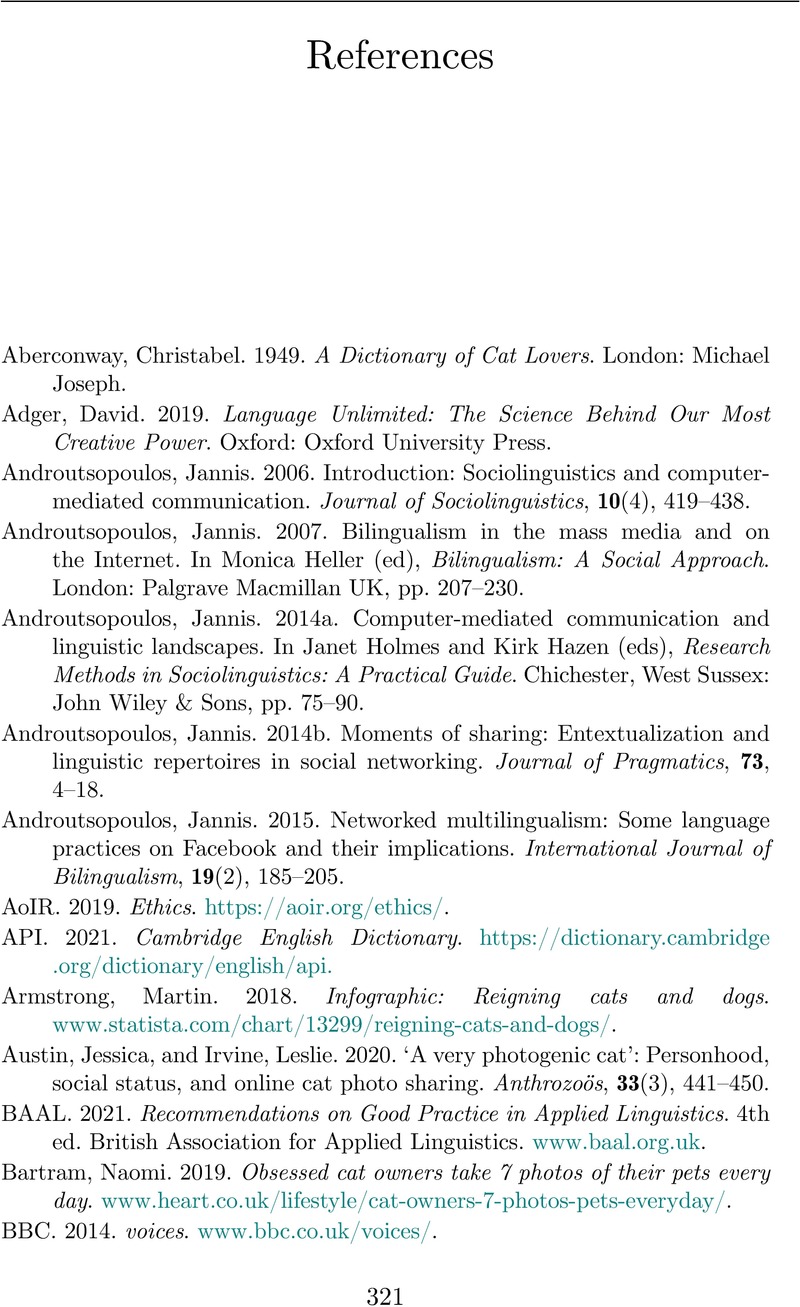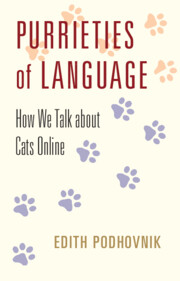Book contents
- Frontmatter
- Contents
- Illustrations
- Tables
- Acknowledgements
- 1 The Cativerse
- 2 The Feline Territory of Language
- 3 Meowlogisms
- 4 Da Kittehz
- 5 Virtual Furever Homes
- 6 Multimeowdality
- 7 Meow and More
- 8 Going on Pawtrol
- 9 Linguistic Scratching Posts
- 10 #StatsWithCats
- 11 Cattitude and Purrception
- Appendix Meowscellaneous
- References
- Clawssary
- Index
- References
- Frontmatter
- Contents
- Illustrations
- Tables
- Acknowledgements
- 1 The Cativerse
- 2 The Feline Territory of Language
- 3 Meowlogisms
- 4 Da Kittehz
- 5 Virtual Furever Homes
- 6 Multimeowdality
- 7 Meow and More
- 8 Going on Pawtrol
- 9 Linguistic Scratching Posts
- 10 #StatsWithCats
- 11 Cattitude and Purrception
- Appendix Meowscellaneous
- References
- Clawssary
- Index
- References
Summary

- Type
- Chapter
- Information
- Purrieties of LanguageHow We Talk about Cats Online, pp. 321 - 330Publisher: Cambridge University PressPrint publication year: 2023



